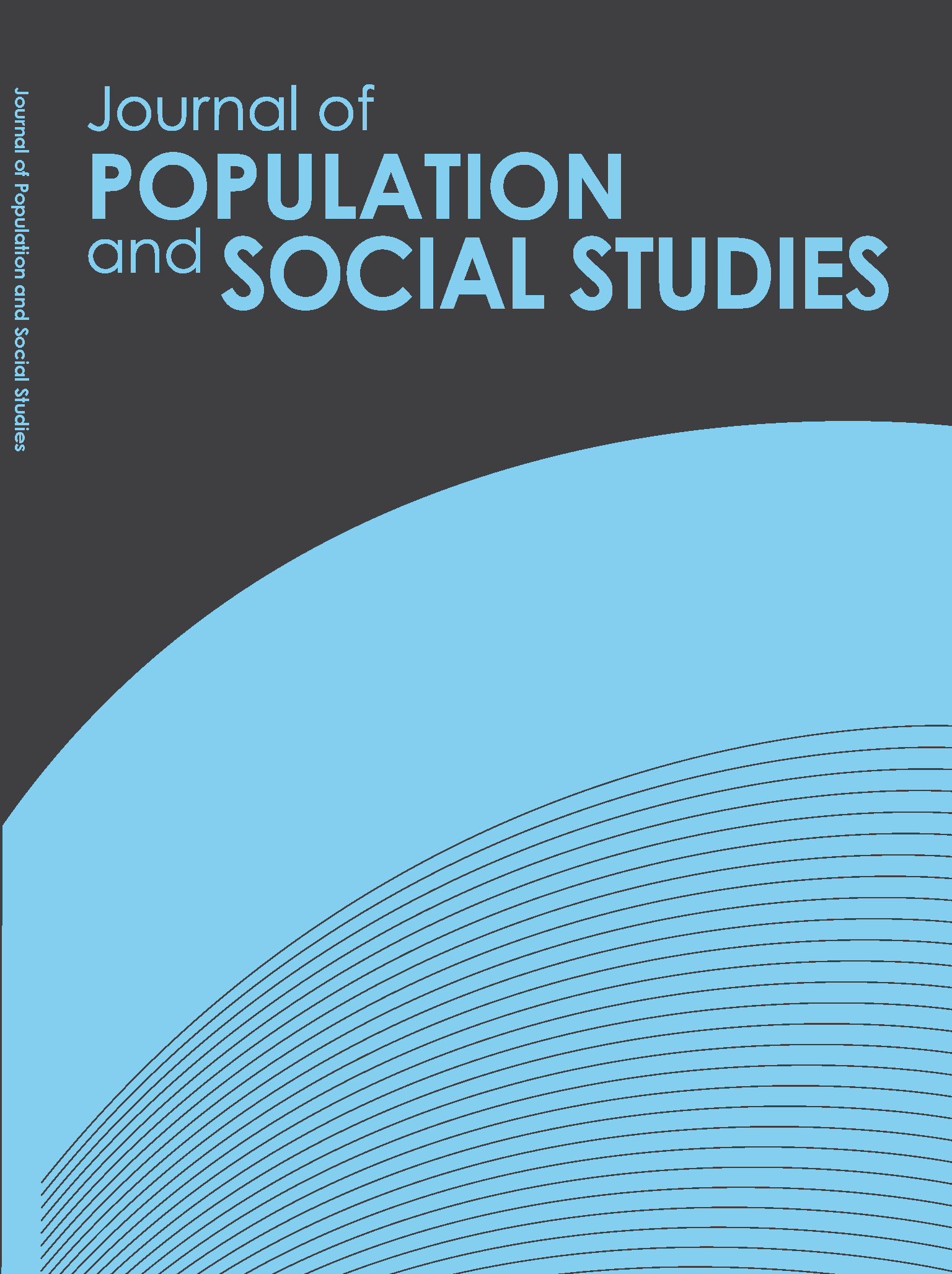Development of a Culturally-Based Care Model for Muslim Mothers in a Rural Community in Southern Thailand
Main Article Content
Abstract
This study applies community-based participatory research to develop a culturally-based care model for Muslim mothers. It was conducted in a rural community in one of the three southernmost provinces in Thailand from May 2013–June 2014. The study involved three groups of participants: 26 Muslim mothers and 17 of their husbands, 14 community and religious leaders, and 14 healthcare providers, including village health volunteers and traditional birth attendants. Qualitative data were collected through focus group discussions, in-depth interviews and participatory observations. Data were analyzed using content analysis. The results indicate that the critical elements of a culturally-based care model include community partnerships and networks, cultural competence in care among healthcare providers, culturally-sensitive maternal care guidelines, trained village maternity care volunteers, and the adoption of a standard continuum of culturally-sensitive care. The culturally-based care model was implemented in harmony with religious practices, meeting cultural needs in order to improve maternal and child health in the rural community.
Article Details
References
Bureau of Health Policy and Strategy, MOPH. (2013). Public health statistic2013.Nonthaburi, Thailand: Ministry of Public Health. Retrieved from http://bps.ops.moph.go.th/Healthinformation/index.htm
Campinha-Bacote, J. (2002).The process of cultural competence in the delivery of healthcare services: A model of care. Journal Transcultural Nursing, 13(3), 181-184. doi: http://dx.doi.org/10.1177/10459602013003003
Foster, J., Burgos, R., Tejada, C., Cáceres, R., Altamonte, A., Pérez, L., Noboa, F. M., Felix, M., Heath, A., Carbley, R., Chiang, F. & Hall, P., (2010). A community-based community approach to explore community perception of the quality of maternal-newborn health services in the Dominican Republic. Midwifery, 26(5), 504-511. doi: http://dx.doi.org/10.1016/j.midw.2010.06.001
Fraser, D.M. & Cooper, M. A. (2009). Myles’ textbook for midwives (15th ed.). London: Churchill Livingstone.
Health Promotion Center Region 12. (2013). Annual report of the year 2013. Yala Province, Thailand: Health Promotion Center Region 12.
Homer, C., Brodie, P. & Leap, N. (2008). Midwifery continuity of care: A practical guide. New South Wales, Australia: Churchill Livingstone Elsevier.
Israel, B.A., Eng, E., Schulz, A.J. & Parker, E.A. (2005). Methods in community-based participatory research for health. San Francisco: Jossey-Bass.
Knodel, J., Gray, R. S., Sriwatcharin, P. & Peracca, S. (1999). Religion and reproductive: Muslims in Buddhist Thailand. Population Studies, 53, 149-164. doi: http://dx.doi.org/10.1080/00324720308083
Krippendrofft, K. (2013). Content analysis: An introduction to its methodology (3rd ed.). Thousand Oaks, California: Sage Publications.
Lawrence, P. & Rozmus, C. (2001). Culturally sensitive care of the
Muslim patient. Journal of Transcultural Nursing, 12(3), 228-233. doi: http://dx.doi.org/10.1177/104365960101200307
Liabsuetrakul, T., Promvijit, T., Pattanapisalsak, C., Silalai, S. & Ampawa, T. (2007). Emergency obstetric care in the southernmost provinces of Thailand. International Journal for Quality in Health Care, 19(4), 250-256.
Ma, G. X., Toubbeh, J. I., Su, X., & Edwards, R. L. (2004). ATECAR: An Asian American community-based participatory research model on tobacco and cancer. Health Promotion Practice, 5(4), 382-394. doi: http://dx.doi.org/10.1177/1524839903260146
McCourt, C. (2006). Supporting choice and control? Communication and interaction between midwives and woman after the antenatal booking visit. Social Science& Medicine, 62(6), 1307-1318. doi: http://dx.doi.org/10.1016/j.socscimed.2005.07.031
McFadden, A. & Renfrew, M.J. & Atkin, K. (2012). Does cultural context make a difference to women’s experiences of maternal care? A qualitative study comparing the perspectives of breast-feeding women of Bangladeshi origin and health practitioners. Health Expectation.1-12. doi: http://dx.doi.org/10.1111/j.1369-7625.2012.00770.x
McLand, H. L., Foster, D.A., Davey, M. A., Farrel, T., Gold, L., Biro, M. A., …, Waldenstrom, U. (2012). Effects of continuity care by a primary midwife (caseload midwifery) on caesarian section rate in women of low obstetric risk: The COSMOS randomized controlled trial. British Journal of Obstetrics and Gynecology 19 (12), 1483-1492.
Milliez, J. (2009). Rights to safe motherhood and newborn health: Ethical issues. International Journal of Gynecology and Obstetrics, 106(2), 110-111. doi: http://dx.doi.org/10.1016/j.ijgo.2009.03.019
Miller, J. E. & Petro-Nustas, W. (2002).Context of care for Jordanian
women. Journal of Transcultural Nursing, 13(3), 228-236. doi: http://dx.doi.org/10.1177/10459602013003012
Muhoza, D.N., Broekhuis, A. & Hooimeijer, P. (2015). Demand and unmet need to space births in Rwanda: A two-step analysis of determinants. Journal of Population and Social Studies, 23(1), 1-16.
National Statistical Office (2009). Statistics in Thailand. Bangkok: National Statistical Office. Retrieved from http://service.nso.go.th/nso/thailand/thailand.jsp
O’Fallon, L.R. & Dearry, A. (2002). Community-based participatory research as a tool to advance research. Environment Health Sciences, 110(2), 155-159.
Panthong, A., Paisunyakul, S., Kantaruksa, K., Sriareporn, P. & McDonald, T. (2014). Development of midwifery care model for a rural community. Pacific Rim International Journal of Nursing Research, 18(4), 343-356.


